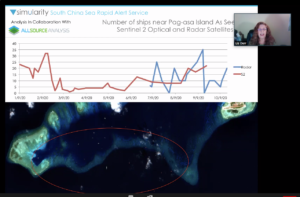MANILA, Philippines—The Philippine Navy has received eight drones worth P710 million from the United States, a set of equipment which Navy officials said would serve as “eye in the sky” for better maritime patrols nationwide.
The Insitu ScanEagle 2 unmanned aerial systems were turned over by US officials to Philippine Navy chief Vice Admiral Giovanni Carlo Bacordo in a ceremony at Sangley Point, Cavite City on Wednesday (Nov. 25).
The turnover of the drones came two days after P868 million in precision-guided munitions were also handed over by US officials to the Philippine military.
The drones were under the Maritime Security Initiative of the US government, which was set up in 2015 to aid allies in the region. The drone package included two launchers, a skyhook and ground control station.
Vice Admiral Erick Kagaoan, representing Defense Secretary Delfin Lorenzana, said the turnover of the drones would “bolster the Philippine Navy’s readiness for territorial defense, internal security, humanitarian assistance and disaster response and international defense.”
“Above all, this will significantly boost our maritime domain awareness especially in the West Philippine Sea,” he said.
The Philippine Air Force acquired similar drones in 2018 from the United States. Kagaoan said the PAF drones are being operated by the 300th Air Intelligence and Security Wing in Palawan, the island closest to Spratlys in the West Philippine Sea.
Kimberly Kelly, US acting deputy chief of mission, said the ScanEagle will enhance mutual maritime and domain awareness.
Bacordo said the drones will “expand the coverage” of Philippine Navy patrols.
“It has given us another option to expand the coverage which is less costly and less risky for our personnel,” he said.
The drones, which could be deployed from ships, are capable of staying in the air for 12 to 15 hours compared to 2 to 3 hours for helicopters.
“We don’t have to actually deploy people,” Bacordo said. He said drones have longer coverage “because of the flying time which is 12 to 15 hours whereas if we send a helicopter it’s just about two hours.”
The unmanned aerial systems could also be used for other missions like internal security operations, search and rescue, humanitarian assistance and disaster response.
The new equipment would be deployed with the Maritime Unmanned Aerial Reconnaissance Squadron (MUARS 71), a newly activated team of the Naval Air Wing which would be based in San Antonio town, Zambales province.


